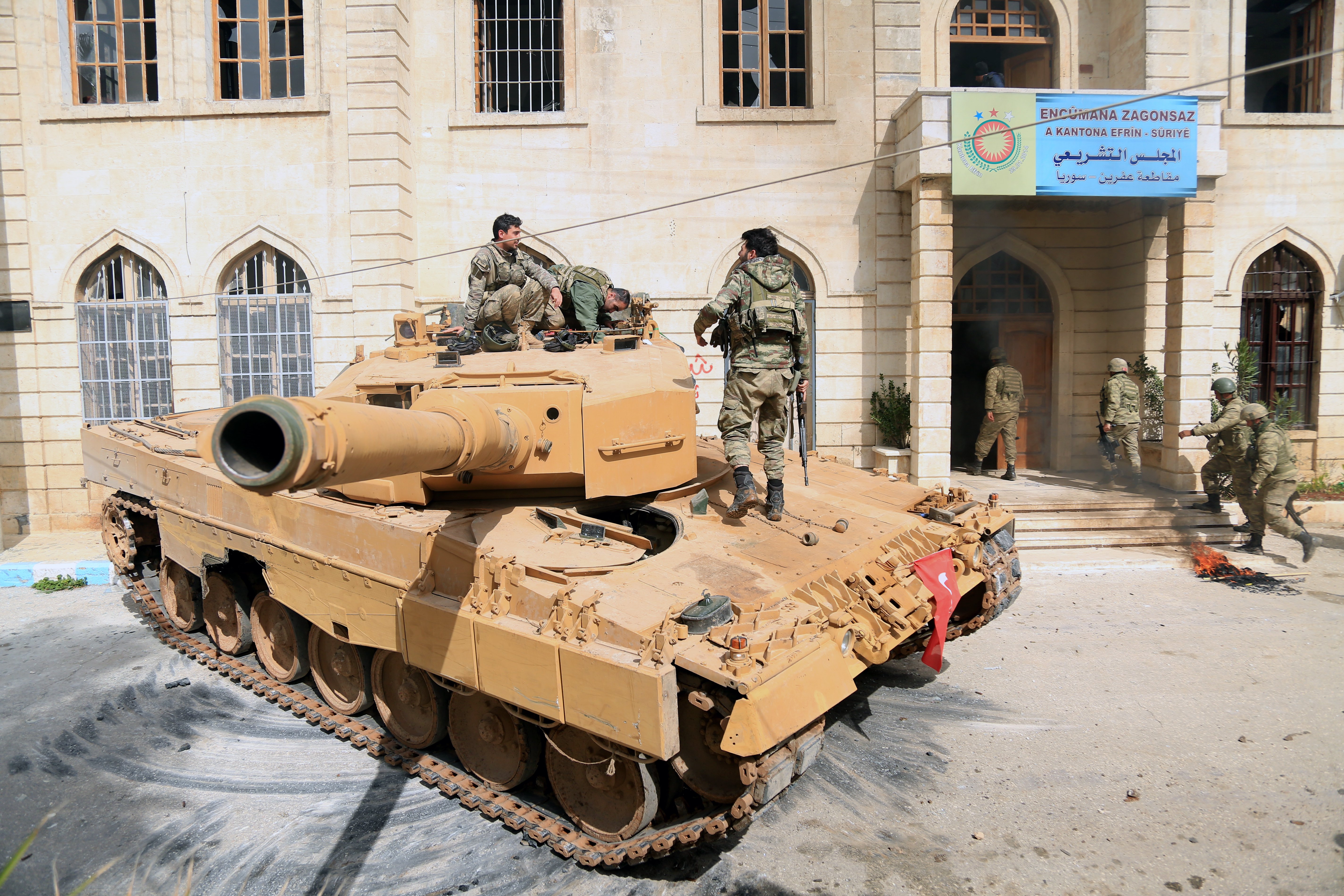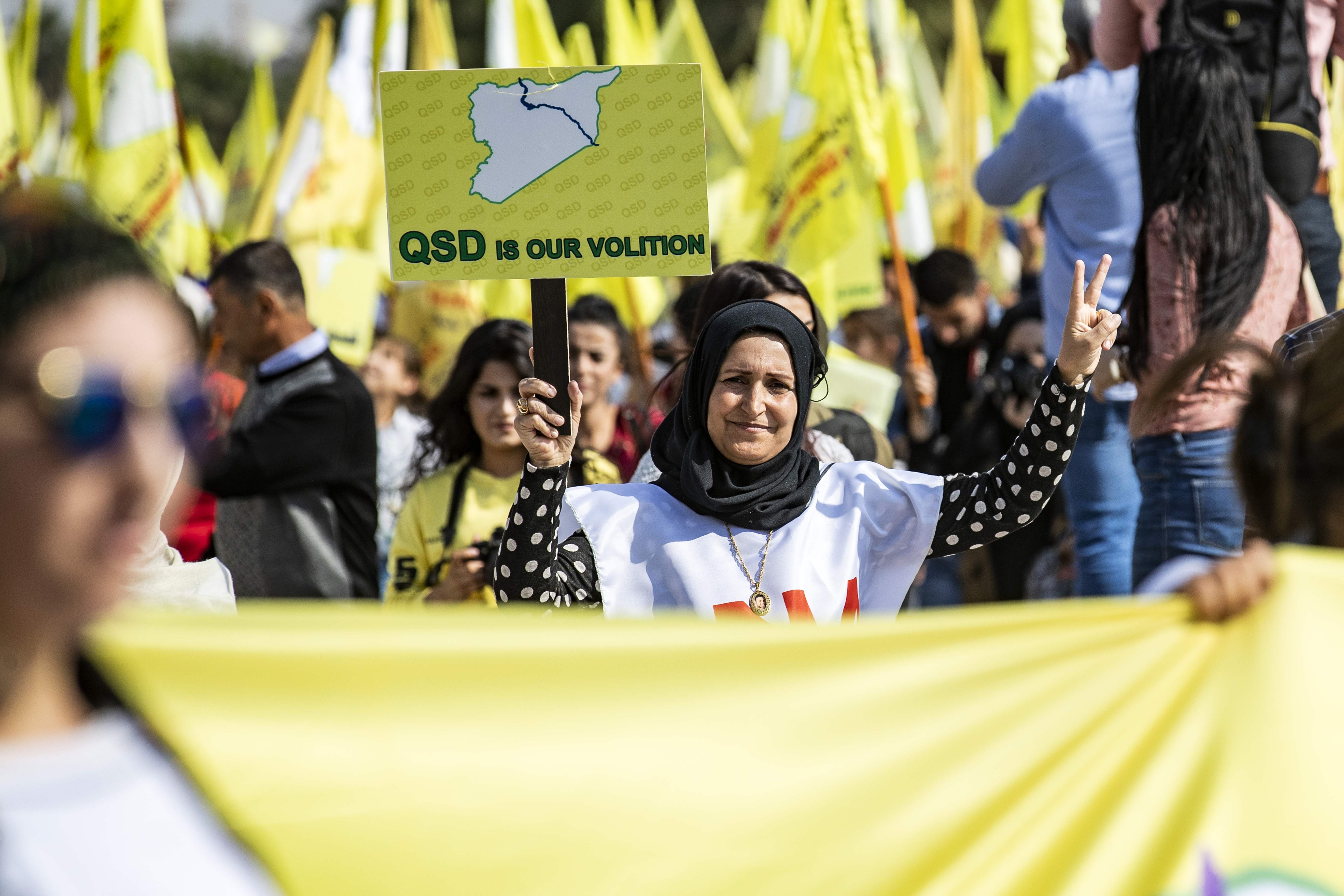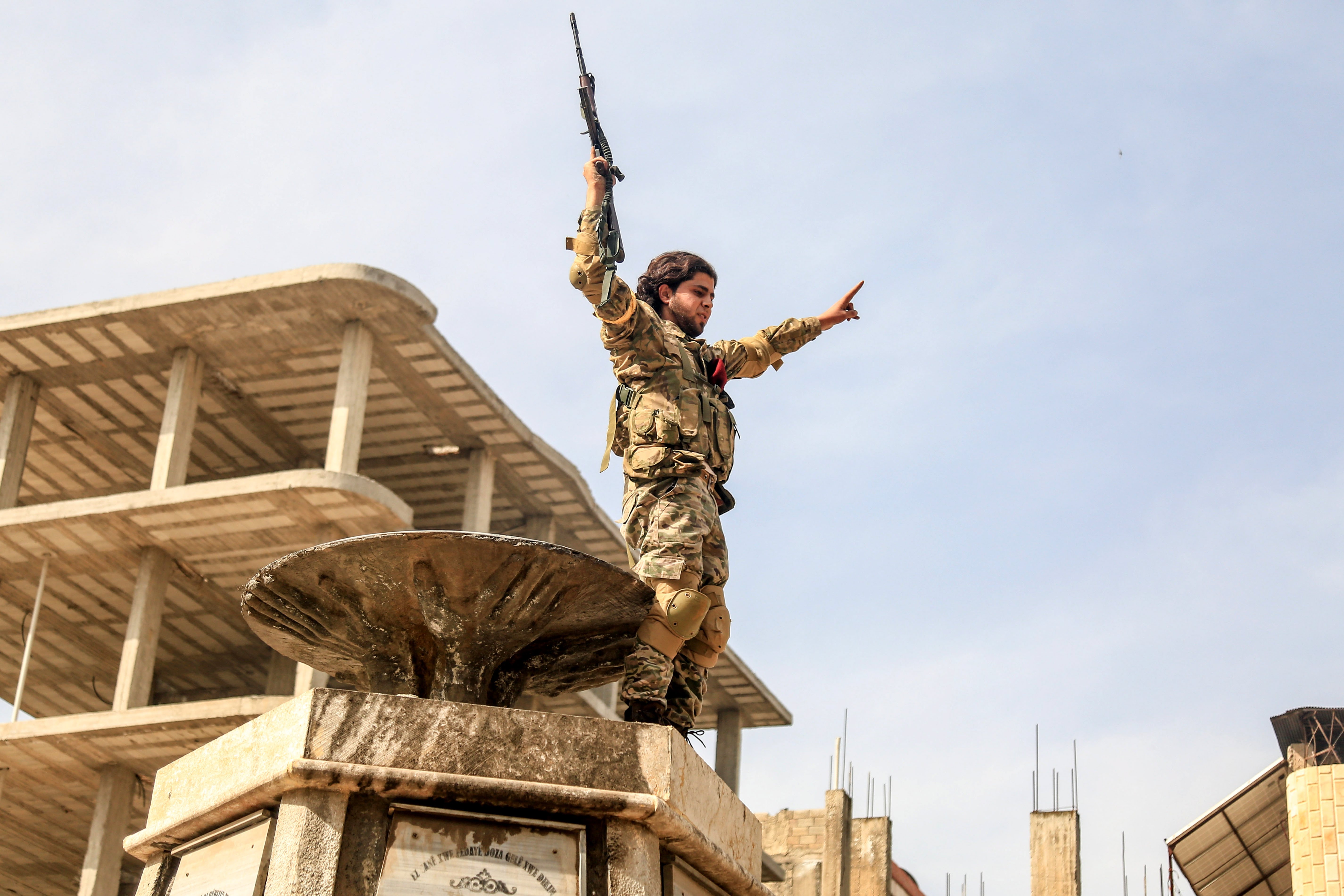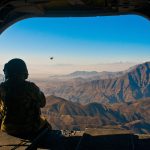THE WARSAW INSTITUTE REVIEW
Date: 4 December 2019 Author: Witold Repetowicz
Turkey’s invasion of Syria and its consequences for Europe
Turkey’s invasion of North and East Syria has exposed the powerlessness of European countries, which, in spite of establishing a common position, have been unable to take any effective action. It will also have a far-reaching impact on increasing terrorist threat, new humanitarian crisis, and change in the geopolitical balance. Turkey’s dependence on Russia will also increase, and war crimes committed in Syria will affect NATO’s image.

The defeat of the Islamic State and Turkey’s dissatisfaction
Turkey launched its invasion on 9 October, firing on Kurdish-dominated border areas from the Euphrates to the Iraqi border. The main strike took place between Tall Abyad and Sere Kaniye, where after two weeks of fierce fighting, Turkey and its subservient jihadist troops managed to occupy both cities. This was due to, among other things, intense air raids during which a local hospital was bombed, as well as the earlier dismantling of border fortifications by the Syrian Democratic Forces (SDF) defending the area.
Turkish President Recep Tayyip Erdogan has long announced the attack on North and East Syria (NES). NES is a de facto autonomous territory created in the areas controlled by the SDF, a coalition formed on the initiative of the Syrian Kurds, which also involves Arab and Christian (Assyrian) troops. The SDF played a crucial role in defeating the Islamic State (IS) in Syria. Most of the territory of NES was previously occupied by IS. Before the Turkish invasion, the NES area covered approximately 27% of Syria’s territory.
An effective fight against IS in Syria was possible as a result of the close cooperation between SDF and the USA. Its beginnings date back to the end of 2014 when intense American air raids on IS positions near the city of Kobanî (also referred to as Ayn al-Arab) led to the breakdown in the terrorist attack and the beginning of the Kurdish counterattack. The cooperation intensified in 2016. During the battle for the city of Manbij and, subsequently, during the key, almost a year-long campaign to push IS out of its headquarters in Raqqa, the USA was transferring more and more weapons and military equipment to the SDF. At the same time, intelligence cooperation has also intensified. It happened as a result of the SDF’s intelligence, which managed to track down and kill IS leader Abu Bakr al-Baghdadi. According to some sources, the Kurds have also provided Americans with intelligence on the activities of Iran and its allies in Syria.
From its very beginning, the Kurdish-American cooperation was being negatively received in Turkey.
Meanwhile, despite some IS attacks in Turkey, it could be argued that, in a strategic calculus, Ankara may have not seen Syrian al-Qaeda or IS jihadists as a direct threat, but as an indirect instrument in the fight against the Kurds and the SDF. Indicators which may point to what may be considered potential cooperation of the Turkish MIT secret service with IS include relevant evidence where some high-ranking IS officers taken prisoner by the SDF have testified to this. The value of a terrorist’s testimony, under which conditions, and potential purposes is up for debate. Another indicator is Baghdadi’s last location, a village a few kilometers from the Turkish border in north-west Syria, in areas controlled by militias supported by Turkey. Baghdadi was still in Baghouz in the Deir ez-Zor province of southeast Syria at the beginning of 2019. Baghouz, the last bastion of IS, was occupied by SDF in March 2019. It is difficult to imagine another way that Baghdadi could get from there to his last base – where he was killed – than through the territory of Turkey or Turkey-controlled areas of Syria.
A threat from the PKK?
At the same time, Turkey is still acting with its traditional hostility towards any manifestation of Kurdish emancipation, fearing that this will also strengthen the Kurds in Turkey. Therefore, Turkey did not want to allow any Kurdish autonomy to be formed in northern Syria. Moreover, it is also in Turkey’s interest to induce shifts in demographic compositions of persons settled along the border belt (inhabited by most of the Kurdish population in Syria) in order to separate the Syrian Kurds from their compatriots in Turkey and Iraq. This could be achieved by creating the so-called “Arab Belt,” referred to as the “safe zone” by Turkey. It would mean the resettlement of 2-3 million Syrian Arab refugees currently living in Turkey. There are two problems with this solution: first, that they namely come from Western Syria, and secondly, this is a precariously delicate undertaking to avoid incidents which could be accused of resonating with harmful activity and human rights violations.
Turkey claims to be running an “anti-terrorist operation,” and the SDF (as well as the Kurdish YPG troops and the main PYD party) is part of the Kurdistan Workers’ Party (PKK), which has been fighting guerrilla warfare in Turkey for 40 years. A contrasting view, however, suggests that the reality of the relationship between SDF/YPG/PYD and the PKK is that it is very loose and comes down to the recognition of the symbolic leadership of Abdullah Öcalan, one of the founding members of the PKK, who has been imprisoned in Turkey for 20 years. Neither the SDF nor the YPG have taken any action outside Syria, including, in particular, against Turkey. In 2013 the PYD even conducted negotiations with the Turkish MIT secret services and with the Turkish Ministry of Foreign Affairs to normalize their relations, but the Turkish side terminated these talks. Although the PKK provided support to the YPG at the beginning of its activity, it was only against the Islamic State. The PKK also took similar actions in Iraq – for example, it evacuated thousands of residents from the IS-besieged mountain of Sinjar in August 2014. In 2016, after the creation of the SDF and the intensification of cooperation between the Syrian Kurds and the USA, the PKK decided to cut all relations with the Syrian Kurds not to give Turkey an excuse to attack and not to hinder the cooperation between the SDF and the USA. Therefore, Turkey’s claim that the SDF/PYD constitutes a threat to its security is not based on solid argumentation.
The invasion, which began on 9 October 2019, was not the first military operation by Turkey in northern Syria. In August 2016, Turkey carried out Operation Euphrates Shield which formally targeted at the Islamic State but also intended to prevent the Kurdish region of Afrin in north-west Syria from being merged with the rest of the NES. This theoretically not very complicated operation lasted up to 7 months. However, in January 2018, Turkey invaded Afrin, occupying the region after two months of fighting. The Kurds finally withdrew, not wanting to allow the massacre of civilians as a result of air raids. The majority of the inhabitants, namely about 300,000 people, left Afrin at that time. During this operation, Turkey used jihadist militia units (to which they referred to as the Syrian National Army) for the first time, which committed numerous crimes, kidnappings for ransom, executions, and looting. Both local sources and international organizations have documented this.

Turkish attacks and SDF-US cooperation
The occupation of Afrin did not affect further US-SDF cooperation for two reasons: the Americans were not present in the region, and they never took responsibility for it. The situation was different for the areas to the east of the Euphrates and the Manbij regions. In December 2018, however, Donald Trump announced the withdrawal of about 2000 American soldiers from Syria. This has provoked sharp criticism in the US, both from Democrats and Republicans. The argument against the US withdrawal from Syria was based on three points. Firstly, the war with the Islamic State was not yet over. Moreover, even after its termination, it was expected that the withdrawal of the US would result in Turkey’s attack, and, consequently, the Kurds involved in the conflict would not be able to prevent the reactivation of IS activities. There was no doubt that despite the military-territorial defeat of IS, this organization retained its ideological potential and created a network of hidden units. Secondly, leaving the loyal ally of the SDF would not be a good signal for other US partners in the world and would constitute support for Russian propaganda, which has long been convincing the Kurds that they should subject itself to its auspice. Thirdly, the US withdrawal could unblock the transit routes that Iran wanted to use to link its territory with the Mediterranean. This, in turn, would not benefit such US partners as Saudi Arabia and Israel. These countries would have to rely on Russia to block US action in Syria.
The consequences of the invasion that began on 9 October already confirm these concerns. However, it seemed that Trump would give up his plans to withdraw US troops from Syria. In September, the United States negotiated with Turkey and the SDF the implementation of the so-called “security mechanism.” Its result was that Kurds withdrew their forces from the five km-wide border belt and removed the border fortifications to prove that they did not pose a threat to Turkey’s security. Joint patrols of the USA and Turkey appeared there, and Turkey was also able to carry out several reconnaissance flights. However, a few days before the invasion, President Trump suddenly announced that, in the face of a planned Turkish attack, he was withdrawing US forces, thus opening the way for Turkey.
Revitalization of the Islamic State
Before the Turkish attack, the SDF held in its prisons about 12,000 IS terrorists, including about 1,000 so-called foreign fighters mainly coming from Europe. Moreover, in the camps Ain Issa and al-Hol, there were about 100,000 members of their families, mostly very radicalized, faithful to the IS ideologies. Of these, around 8,000 children and 4,000 women were from outside the Middle East. However, countries of Europe refused to cooperate with the SDF on the European prisoners of war and their family members. The reluctance to repatriate these people was somewhat understandable due to concerns about the terrorist threat. The attempt to ignore the problem, however, posed a growing risk that it would go off under the influence of external factors, such as the Turkish invasion of NES and the uncontrolled migration of these people to Europe. This is what happened, although its scale is difficult to assess. During the Turkish bombings, many terrorists escaped from some of the prisons, there was an attempted revolt in the al-Hol camp, and about 750 people associated with IS managed to escape from the camp in Ain Issa. Most of them tried to get to Turkey from where many of them could then get to Europe.
Support Us
If content prepared by Warsaw Institute team is useful for you, please support our actions. Donations from private persons are necessary for the continuation of our mission.
The weakening of control over IS activity (as a result of the US withdrawal and the engagement of the SDF in the fight against Turkish invasion) has a far more significant impact on IS operational potential than the elimination of Baghdadi. It is worth recalling that the culmination of Jihadist terrorist activity in Europe happened in the years 2015–2017. The later decrease in the number of effective attacks was caused by and directly correlated to the SDF’s liquidation of the command center for these operations based in Raqqa. The concurrence in time of the removal of IS by the SDF from Raqqa and a radical decline in the number of successful terrorist attacks in Europe is no coincidence. However, just one month after the start of the Turkish invasion, the activity of the hidden IS units in North and East Syria has clearly increased. During the first 21 days, there have been 38 IS attacks, including two severe bombings in Qamishli. A total of 51 people were killed in these attacks. The number of joint US-SDF attacks on IS hideaways has decreased dramatically.
European countries were aware of the threat posed by Turkish aggression to the reactivation of IS, but they did not take any action to counteract it. After Donald Trump’s announcement in December that American troops would withdraw from Syria, only a few European countries declared their willingness to have a symbolic military presence in these areas (Great Britain and France had already had small contingents in Syria before). For example, the Germans completely ruled out the possibility of sending their forces there. The SDF’s calls for creating an international tribunal to try IS terrorists have been ignored, and judicial cooperation with NES institutions has not been established. The latter was motivated by the fear of Turkey’s protests against official relations with the NES institutions, which could lead to a gradual recognition of their subjectivity.

Europe’s ineffective response
Two days after Turkey’s invasion, five European states-members of the UN Security Council (Great Britain, France, Belgium, Germany, and Poland) tried to push through a resolution condemning Turkey’s actions and highlighting the threat they pose to the revitalization of the IS. However, the resolution was blocked by the collaborative action of the superpowers: Russia, the USA, and China. It was a spectacular failure for Europe. It should be mentioned that the Security Council has the tools to solve the crisis. The aim is to bring international peacekeeping forces into the NES based on Chapter VII of the Charter of the United Nations. Since Turkey claims that the alleged activity of the PKK in northern Syria poses a problem for this country, then UN forces could verify it and – if necessary – block such a threat. The fact that the Security Council is not in a position to take such a decision, however, shows that the parties concerned have completely different intentions than the stabilization of these areas.
Erdogan, in response to the criticism of his actions by Europe, used the classic argument, namely blackmail, of carrying out a demographic attack on Europe using 3.5 million Syrian refugees in Turkey. The Turkish President also demanded that the rhetoric used by European politicians be aligned with the terminology used by Turkish propaganda. In particular, it is about forcing politicians and the European media not to use terms such as ‘invasion’, ‘ethnic cleansing’, ‘war crimes’, and ‘crimes against humanity’. Agreement with these demands would translate into the total collapse of Europe – if, under the influence of blackmail, it would give up one of its foundations – the freedom of speech.
The plan’s implications for Europe
One of Erdogan’s demands was that Europe should finance his project to develop infrastructure in the zone of occupation after the resettlement of refugees from Turkey to Europe. This would make Europe participate in the Turkish plan which critics could deem ethnically-orientated. So far, these demands have been rejected, but at the beginning of November, Erdogan met with UN Secretary-General Antonio Guterres, after which he announced that the UN would study the resettlement plan for the population in northern Syria. It is worth recalling that the Turkish invasion of Afrîn has already forced 300,000 inhabitants of the region, most of whom are Kurds, to leave their homes. A month after the start of the invasion of northern Syria, another 300,000 people fled from the areas under the Turkish attack. This number represents almost ¼ of the total Kurdish population in Syria. Among those subject to the plan’s immediate effects are not only Kurds but also Christians. All this is just the “minimum” option aiming only in the areas where Turkish occupation was agreed at the Putin-Erdogan meeting. It is a belt of about 100 km and a depth of 32 km, stretching between the towns of Tell Abyad and Serê Kaniyê. The open question is whether this would also include Christian Tell Tammer (35 km from the border) – which would mean the destruction of one of the last Christian regions in northern Syria. There is no doubt that Christians will not be able to stay in these areas if they are under the occupation of Turkey and Turkey-supported jihadists. However, if Turkey implements its plan to create a zone of occupation of more than 400 km, the number of refugees will increase to at least 800,000, and Christianity in northern Syria may be ultimately eradicated.
The plan merits worry because any activity which either intentionally aims to, or as a side-effect causes, on such a gigantic scale a shift in demographic composition has risks of human rights violations. Moreover, the said activity has the possibility to continue gradually and intensify in its harshness. We hope it will not go in that direction, but after all, we remember that ethnic cleansing is a crime against humanity. It is an action that can have serious consequences in Europe. Firstly, there is the threat of a significant number of Kurds migrating to Europe. Although only 12,000 people crossed the border with Iraq in the first two weeks after the invasion, this number may promptly increase. Furthermore, Iraqi Kurdistan is already home to around 200,000 Syrian Kurds. Increasing persecution of the Turkish Kurds may also affect their migration. Although it is unlikely that the scale of this migration will exceed tens of thousands of people, the influx of these people into Europe could cause riots on Europe’s streets. Clashes are already taking place between the participants in the pro-Kurdish demonstrations and Turkish nationalists. Several times speeding cars were driven into the crowd of protesting Kurds. The influx of large numbers of victims of the Turkish invasion and its implications thereafter will undoubtedly lead to a radicalization of attitudes and may, in countries such as Germany and the Netherlands, result in a regular street war between the PKK and Turkish terrorist organizations such as Die Osmanen Germania gangs. Combating the latter was not adequately managed in Europe because of their links with the Turkish authorities and the fear of European governments of a diplomatic scandal and Turkey’s reaction.
NATO’s image problem and the strengthening of Russia
Contrary to popular belief, Europe is not powerless against Turkish blackmail. Germany is Turkey’s largest trading partner, and both imports and exports to and from Europe account for more than 50% of Turkey’s foreign trade. Meanwhile, the Turkish economy is extremely fragile and vulnerable to shocks. This was shown, among others, by the sanctions imposed on Turkey by Russia (after shooting down SU-24) and then by the USA (in connection with the imprisonment of Pastor Brunson). The EU’s imposition of an embargo on Turkey would, in a very short time, lead to a gigantic crisis in that country and would force Turkey to withdraw from all its aggressive actions. Unfortunately, Europe is not capable of doing that. After the Turkish aggression against Syria, EU politicians announced the imposition of sanctions on Turkey, but in the end, no real measures that would effectively hit the Turkish economy were introduced.
The war crimes accompanying the Turkish invasion can also be very troublesome not only for Europe but also for NATO – of which Turkey is a member. In the first days of the war, recordings of executions of prisoners of war and civilians by jihadists under Turkish command were revealed. One armed group also ambushed a car carrying Hevrin Khalef, one of the leading Kurdish politicians in Syria, and then brutally murdered her. Turkey was also accused of using chemical weapons (white phosphorus). International inspectors, however, refused to verify these allegations despite having collected all samples needed. Hospitals and ambulances were also bombarded. Three nurses of the Kurdish Red Crescent were kidnapped and murdered. These crimes have given rise to voices calling for the need to make the Turkish leadership, led by Erdogan, stand before international criminal jurisdiction. For example, Carla Del Ponte, the former Chief Prosecutor of the International Criminal Tribunal for Rwanda, the International Criminal Tribunal for the former Yugoslavia, expressed such an opinion. However, there is no indication that anyone will be held accountable, including the direct perpetrators who have already committed similar crimes. This will leave a mark on the entire North Atlantic Alliance and would evidence a complete contrast between NATO’s declared values and the practice of one of its members.
The recent events in Syria also represent a considerable strengthening of Russia. It was Putin who dictated the final ceasefire conditions. Turkey adapted to them even though they were less favorable to this country than the arrangements previously made with US Vice-President Mike Pence. It is also up to Russia now to decide how far it will allow Turkey to go. Turkey’s inclination to comply with the Russian guidelines was visible, among others, when it immediately released (at the request of the Russians) a group of prisoners of war from the Syrian government army (supporting the SDF in the fight against Turkish forces) and transferred them to the Russians. Besides, Turkish patrols in the ten km-wide border belt ride by Russian escort and (at the Russians’ request) without a Turkish flag. Russia can also take control of transit routes, and it will be up to it to decide whether the Iranian blockade will be effective. In this way, it will gain greater opportunities to put pressure on Israel or Saudi Arabia, as well as a bargaining chip in talks with the USA. This may also have its consequences for Europe – especially in its eastern part.
All texts published by the Warsaw Institute Foundation may be disseminated on the condition that their origin is credited. Images may not be used without permission.














